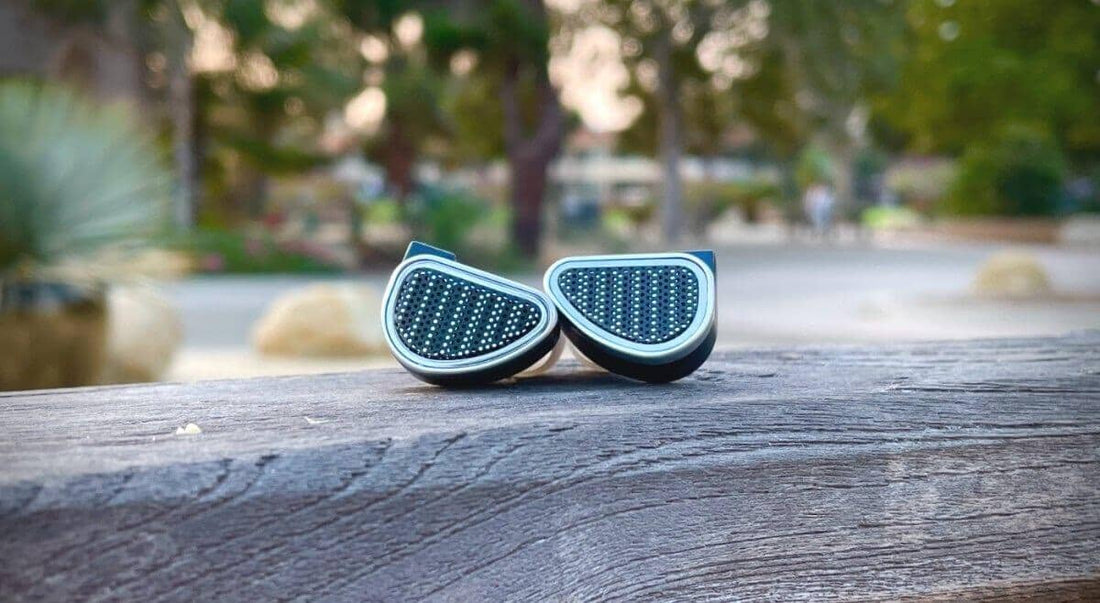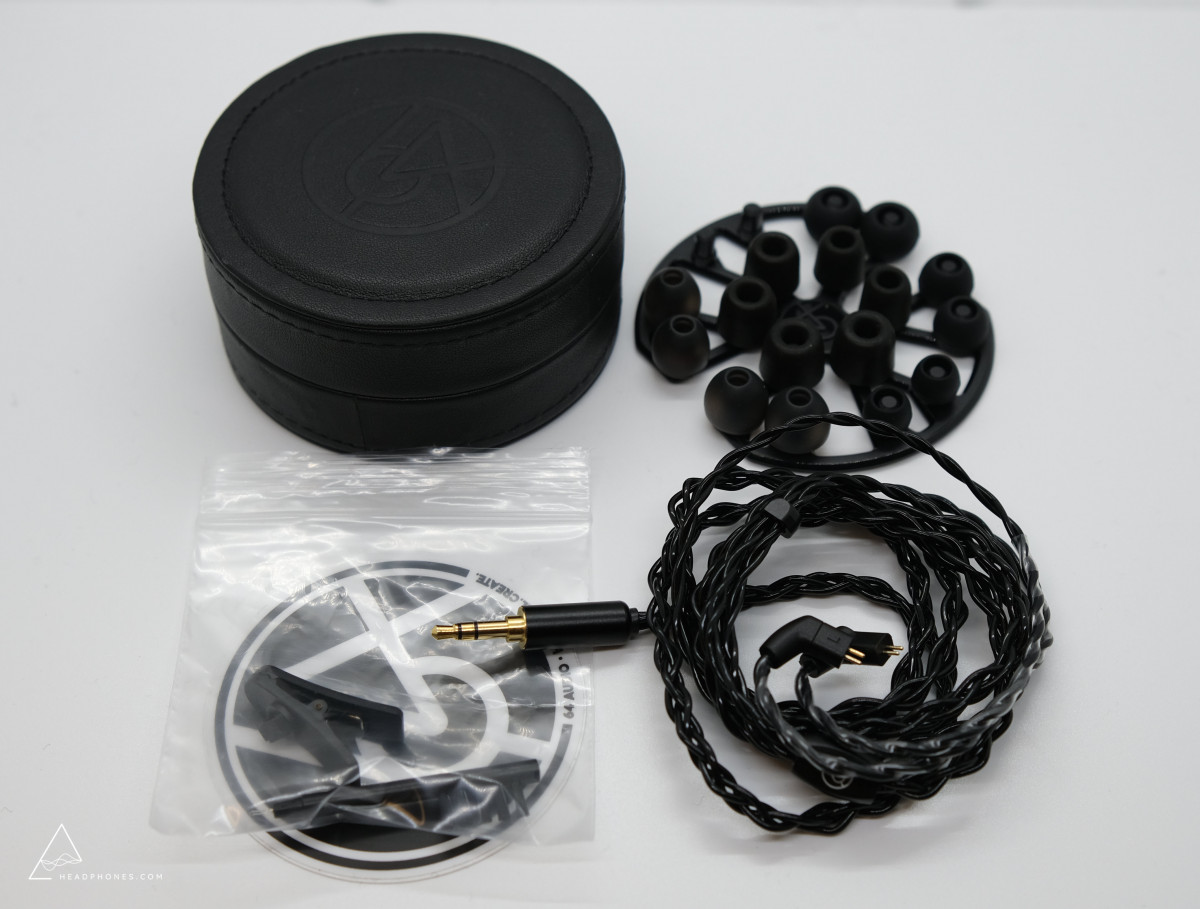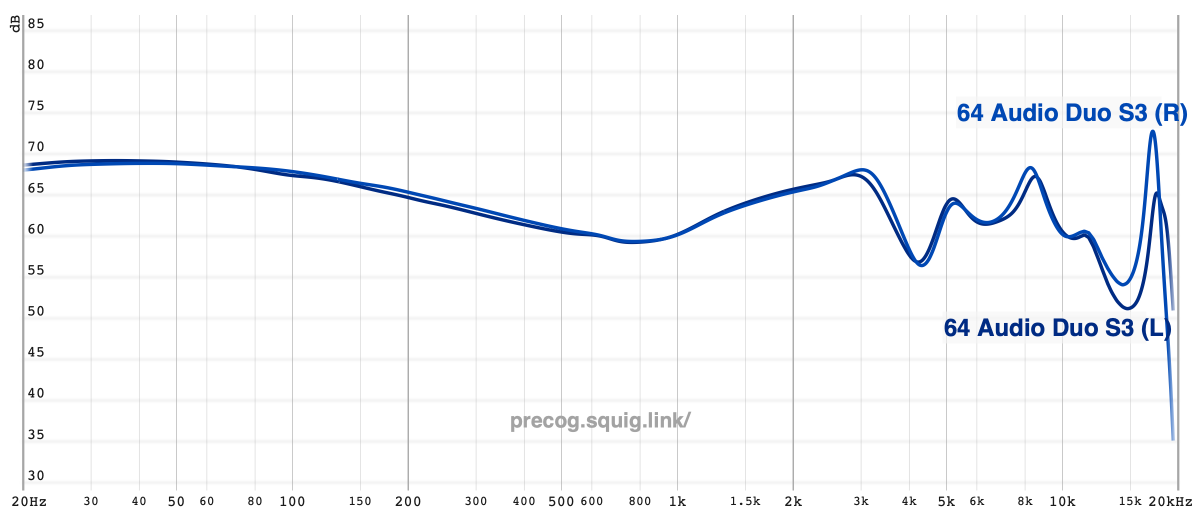64 Audio Duo Review - Compliment Me

Time. Unfortunately, time is something that a lot of companies in the IEM world don't seem to have; the focus seemingly on pumping out the next big release with little regard for the legacy of previous products. To the contrary, 64A's IEMs have admirably stood the test of time due to the considerable research and development the company has put into their products. Indeed, as far back as the release of the three-driver Tia Trio in 2017, 64A tells me that they knew they wanted to release a dual-driver, tubeless IEM. Four long years later, it's finally been released to the tune of $1200 and it's aptly named the Duo (1DD/1BA). 64A showcased the Duo at CanJam SoCal 2021 where I spent a couple days demoing it before opting to purchase my own unit for review.
So how does the Duo stack-up, and are its new technologies enough to propel it into excellence? Let's take a look.
This unit was purchased by me with my own money. As usual, what follows are my honest thoughts and opinions to the best of my ability.
Source & Drivability
All critical listening was done off of my iBasso DX300 and iPhone X with lossless files. The stock cable and silicone tips were used. I found the Duo to be fairly easy to drive, clocking in at around 30% volume on my iPhone X to hit my usual listening volumes (~70dB). Hissing was a non-issue. While not the focus of the Duo's marketing, the Duo also features 64A's LID (Linear Impedance Design) technology which means that it sports a flat impedance curve. Differences of impedance off of various sources will not affect the Duo's frequency response.
The Tangibles
- SpinFit Eartips s/m/l
- TrueFidelity Foam Eartips s/m/l
- Wide-bore Eartips s/m/l
- 2-pin 0.78mm Premium cable
- Leather hockey-puck case
- Clip and cleaning tool

Most readers are probably familiar with my criticism of 64A's IEM unboxing experiences; however, I'm pretty content with the strides that 64A has made on this front in the past year. The Duo comes with a solid assortment of ear tips to roll from and the included cable is perfectly useable without the pesky memory wire or sand-papery texture of the maligned, previous cable. The hockey-puck case also seems to have received an update with a more scratch-resistant leather wrap. Good stuff.
As for the design of the Duo, I absolutely LOVE it. The body is milled out of solid aluminum in the tear-drop shaped chassis that characterizes 64A's other IEMs, but the star of the show is the new faceplate grill. The Duo's grill is reminiscent of the ones used on certain planar headphones, and it strikes a beautiful aesthetic when contrasted to the polished stainless steel frame of the grill.

Expectedly, fit and comfort present zero issues for me. The Duo is noticeably shorter in terms of depth relative to 64A's other IEMs and, given that 64A's IEMs already tend to be very comfortable for me, the Duo just might be the most comfortable IEM that I have worn yet. I believe I was able to wear it for a solid 5+ hours straight with minimal fatigue.
It doesn't hurt that 64A is also showcasing a new technology with the Duo called Apex Core; a more advanced example of the pressure-relief system they've implemented in some past IEMs. Whereas those IEMs made use of swappable modules containing viscoelastic foam, the Duo implements a system of channels, chambers, and a tuned, semi-permeable acoustic mesh to control airflow. Suffice it to say it's a boon to any listeners who might struggle with pressure build-up on traditional IEMs. I also found that vocal intelligibility of those around me while I was wearing the earphones was remarkable. It's not as good as the transparency mode on something like the Apple AirPods Pro, mind you, but it's certainly better than most all traditional IEMs.
Of course, there is a trade-off here: The Duo is not the IEM for commuting or if you are trying to block out the outside world. This is for a couple of reasons. One, it obviously has very little isolation (-12dB relative to the industry standard of -26dB) due to the more open design. But two, our perception of the bass frequencies is usually what is inundated first when extraneous noise is introduced. Due to the nature of the Duo's treble response - something I will explore closer in my sound analysis - the Duo has the potential to become overly bright in louder environments. I realized this after Kalani (the terrific representative from 64A) remarked to me about how listeners were finding the Duo anywhere from dark to bright in show conditions at CanJam.

Sound Analysis
The measurement below was taken off of an IEC-711 coupler. There is a resonance peak at ~8kHz; as such, measurements after this point should not be considered entirely accurate. You can visit this link to compare the Duo to other IEMs that I have graphed.

The overall tonality of the Duo is somewhat difficult to nail down. It has a healthy bass shelf, a more gentle pinna compensation, and then a treble response that's about equal parts lower and upper-treble. This culminates in a warm, relaxed presentation with a touch of sizzle in the treble to keep things from getting too dull. While somewhat wonky on paper - or at least certainly not in accordance with any academic target - admittedly, I think it just clicks not unlike 64A's own Tia Trio. To me, the Duo reinforces the notion that 64A's not just throwing darts at the board when tuning, and that they're not afraid to step out of their comfort zone.
Bass
Again, to go back to the aforementioned "wonky" part, I have to admit that I was somewhat concerned when I saw how the Duo's bass response graphs. It has more mid-bass than most of 64A's other models, most closely following the 64A U18T's bass shelf which I find rather plasticky and bloated. Despite this, the dynamic driver being used in the Duo is surprisingly competent, more closely mimicking the 64A Tia Trio (you know, only one of my favorite IEMs ever in terms of bass) in terms of intangible performance. It decays slightly quicker than the wooly 64A Nio in A/B, whilst maintaining a good sense of physicality and richness. The bassline of Girls' Generation's "Everyday Love," for example, sports a rotund, warm characteristic that wraps me into the track and makes me feel at home. Frankly, I'm pretty satisfied with the Duo's bass response. It's by no means sloppy and, while not best-in-class bass, it merits my praise. Remember, the Duo's dynamic driver is tokening the entire midrange too!
Midrange
Speaking of the midrange of the Duo, I'd say it's pretty alright. My biggest criticism of most hybrids is that because they mix driver types - usually a marriage of a DD for the bass and BAs for the midrange - perfect coherency is basically impossible to achieve. The dynamic driver will always skew slower than the BAs; this lends to time-domain and timbral inconsistency. But because the Duo's dynamic driver tokens both the bass and midrange, the Duo manages to eschew this constraint. Midrange transients lean smoother in attack and equally smooth in decay, thus lending to a good sense of what some might call "authenticity" to notes.
Tonally, 64A's also switched up their usual midrange formula. The overall amplitude of the pinna compensation has not changed too much - it still leans toward the more relaxed side - but it does not peak until 3kHz unlike most of 64A's other IEMs which tend to peak a bit earlier at around 2kHz. This lends the Duo to a slightly more upfront center image, but per usual, 64A has recessed the presence regions from 3-4kHz to avoid sibilance. Consequently, vocals also hang slightly higher on the stage in terms of position. While I would've preferred a 2kHz pinna as I find it aligns better with my HRTF for center imaging, I find little fault with this midrange as a whole. It is slightly thick, smooth, and devoid of any egregious sibilance.
Treble
In general, I find the Duo's treble provides some needed energy to keep the warmer focus of the IEM from inundating technical performance. 64 Audio's IEMs are characteristic for their use of the tia tweeter, a proprietary balanced armature driver. This driver circumvents the traditional limitations of most BAs with mind-boggling extension that often presents itself with a strong peak at around 15-16kHz. Due to the high frequency nature of this peak, for most listeners this translates to exceptional micro-detail and shimmer to the decay of percussive instruments whilst avoiding unwanted fatigue. However, the tia driver can be finicky due to the extremely high tolerances needed to implement it. The Duo appears to have more air than any of 64A's other models that use the tia driver; this was consistent across all three units I've heard so far.
A track that I can hear this present itself on is Tim McGraw's "Thought About You;" there is a prolonged ~16kHz whine all throughout the opening that pops more on the Duo than even on my trusty 64A U12t. That in mind, listeners might find it fruitful to play around with tips to try and mitigate unwanted sheen if it's an issue; once I found the right tips, it was smooth sailing. On BoA's "Energetic", the bass-line hits hard and intensive thanks to the Duo's dynamic driver while providing contrast to the tia treble which neatly captures the spice of the shakers oscillating the stage. It's a more "hybrid" sound to be sure, but one that I enjoy nonetheless.

Technical Performance
But I'm still not going to pull the punches: The Duo is not particularly detailed for its price point. The tia treble certainly holds its own in terms of detail, but you might recall that I opted to describe the Duo's midrange as "pretty alright" earlier. This is because it sounds slightly smoothed over compared to even 64 Audio's own U6t which I would not consider a strong performer for clarity. Personally, I think the Duo's midrange neither has good macro-detail nor micro-detail despite being timbrally pleasing. This is ostensibly a limitation of using a single dynamic driver to cover both the bass and the midrange frequencies, even a high-quality driver at that.
Imaging on the Duo is interesting. It's good, but it's also not mind-blowing within the context of the more open nature of the IEM. The Duo's biggest weakness on this front would be localization of instruments. They're somewhat undefined and clearly not as sharp in position as other top performers in this price category such as the Symphonium Helios. But to reiterate: the Duo definitely sports good imaging. I think the best way to describe it would be simply "natural"; sounds mesh into the backdrop pleasingly and there's a good sense of ambiance to the Duo's staging. I do notice that some faint background sounds seem to break the "walls" of the stage and sound distinct from 64A's IEMs like the U6t and U12t which I also have on-hand. Interestingly, from memory, I would characterize this phenomenon as sounding different from 64A's other tubeless designs like the Tia Trio and Tia Fourte too.
But the best part of the Duo's intangibles would be its dynamics performance. As a disclaimer, I do not think the Duo has great micro-dynamic contrast - a sense of individual instruments and vocalists popping with subtle fluctuations in volume - but it stands that the vast majority of IEMs lack this quality anyways. On the other hand, macro-contrast on the Duo has the grandiose sense of weight and authority that characterizes the likes of the 64A Nio. I found myself jacking up the volume and going back to dynamic swings like Sawano Hiroyuki's "Tranquility" at 0:50, repeatedly, just to catch more of this quality while demoing the Duo at CanJam SoCal. I do not know what magic 64A works on their IEMs to squeeze out what I consider the elusive intangible of "dynamics", but suffice it to say there is something about many of their IEMs that catches my attention and gets my head bobbing.
vs. 64A U6t ($1300)
Prior to the Duo's release, the 64A U6t presented the most accessible universal model in the brand's lineup. At a slight uncharge to the Duo, I think it makes for a fitting point of comparison. I spent a couple hours A/B-ing the two IEMs, so I think I have a pretty good idea of how they stack up against one another. Tonally, I'd say they're pretty similar. The U6t has a slightly more controlled bass shelf and an earlier pinna compensation, but you can definitely tell that both IEMs are going for a "warm with a touch of air up top" tuning; the Duo leaning slightly more colored. But where they differ most is in their bass responses. The Duo slams harder and presents a more natural low-end due to its dynamic driver. This applies to the midrange to a lesser extent, as the U6t actually has pretty solid timbre for a BA IEM. Generally, I find the U6t to be a solid step up in detail and technical performance; for example, it has more of the center image diffusion - that slippery, slippery soundstage depth - that I often look for when gauging imaging performance. Surprisingly, I find dynamics equidistant between the models despite the Duo's presence of a dynamic driver and more mid-bass (which some listeners might find lends to this perception).

Moondrop x 64 Audio anyone? My dream collaboration that'll probably never happen, so I took matters into my own hands.
The Verdict
I definitely like the Duo, but admittedly, it's not necessarily outside the scope of the lofty expectations I hold for 64A - at least not in terms of pure sound quality. In my eyes, the Duo is an IEM for listeners who are indexing more heavily for comfort, and it mostly provides a solid compliment to some of 64A's other products and the other IEMs in my collection. It does so by virtue of its new, unique technologies; technologies which 64A also tells me they are eager to trickle down to more accessible price points in the future. We've seen this before between the Tia Fourte and the Tia Trio (of which I'd argue the latter, cheaper IEM is the better of the two). That in mind, I don't think it's unreasonable to expect other IEMs from 64A later down the line sporting the Duo's new technologies, perhaps even in a more refined package! For now, I'm led to posit that the excellent U6t will remain the path for most listeners seeking entry to the 64A sound, while more adventurous listeners might find favor with the Duo.
Reference Tracks
- Aimer - Hakuchuumu
- David Nail - Let It Rain
- Everglow - DUN DUN
- Girls’ Generation - Galaxy Supernova
- Illenium - Broken Ones
- Joe Nichols - Sunny and 75
- Keith Urban - Defying Gravity (2009)
- Keiichi Okabe - Weight of the World (NieR:Automata Original Soundtrack)
- Sabai - Million Days
- Sawano Hiroyuki - Best of Vocal Works Remastered (2020)
- Taeyeon - My Voice (2017)
- Tiffany - I Just Wanna Dance
---
Buy the 64 Audio Duo for the best available price.
Discuss the 64 Audio Duo on the HEADPHONE Community Forum Here.
---
